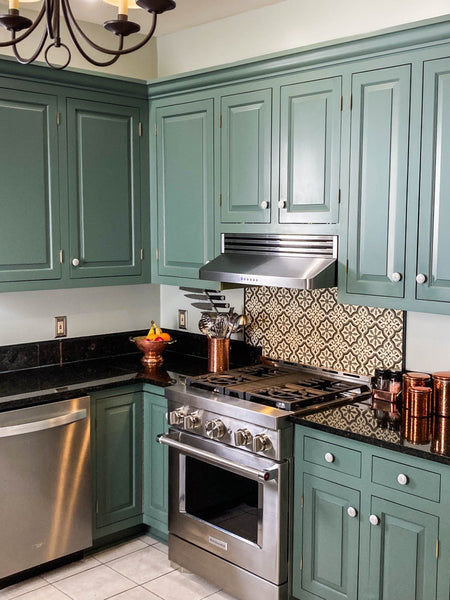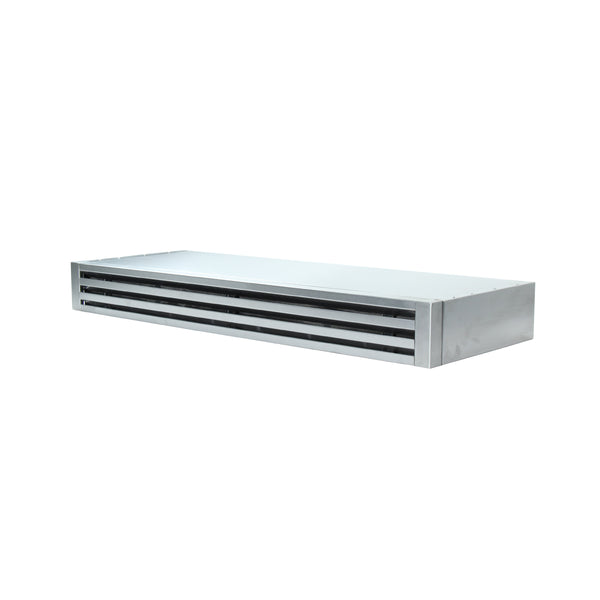Did you just buy an air purifier and you’re looking to learn more about how it works and how to maintain it? We will help you out!
Cleaning the HEPA filter is one of the most important things you can do to ensure your air purifier is in good condition.
But, what’s the best way to clean them? Can all of them be cleaned? Which types do I need to replace?
We’ll go over all of these questions and more in this article. Let’s start with how to clean a HEPA filter.
1. Read the user manual.
There are three main types of HEPA filters: replaceable, permanent, and washable. Each of these types is cleaned differently. Not only that but, if you don’t use the right technique, your filter could be damaged.
Also, manufacturer recommendations may vary depending on the brand of HEPA filters you choose.
That’s why we recommend that you first read your user manual. We’ll go over one below so you know what to look for.
Medify Air Purifier User Manual - A Walkthrough
I headed over to Amazon and checked out the user manual for the Medify MA-25 Air Purifier. I’ll walk through it with you as an example.
(Here’s the manual if you’d like a closer look.)
The first thing you’ll notice is that the HEPA filter isn’t the only filter that requires cleaning. You’ll also need to maintain the mesh pre-filter.
Vacuum the pre-filter about once a month.
This manufacturer recommends that you vacuum the white end of the HEPA filter with a brush attachment of your vacuum cleaner.
Without the attachment, your vacuum may be too rough on the HEPA filter and uproot some of its fibers.
Never use water, household cleaners, or detergents to clean your HEPA filter.
In general, household cleaners and detergents are not recommended for any HEPA filters. They will break down the soft fibers inside the filter and ruin it.
You can use water to clean some HEPA filters called washable filters, but not all of them. That’s one reason it’s so important to look at the owner’s manual. Every filter can have slightly different instructions for maintenance.
Replace the HEPA filter every 2500 hours or about every three to four months.
This is about three to four months if you use your air purifier 24/7. If you use it 12 hours a day, it’s about six to seven months. Some air purifiers will say every four months, while others may say every year.
Check out our article ‘Should I turn my air purifier on all day?’ to learn more about how to use your air purifier.
Always use a replacement filter of the same brand for optimal performance.
This goes for all brands of air purifiers. For the Medify air purifier, you’d want to buy a replacement filter from Medify as well.
There’s always a chance that a generic HEPA filter or one from a different company won’t work. Or, it may be less efficient.
2. Replaceable filters may require cleaning, depending on their longevity.
One common type of HEPA filter is a replaceable filter. Keep in mind that the replaceable HEPA filter might need some cleaning every month or so, depending on the manufacturer. Then, after a few months, it may require replacement.
Generally, you can clean your replaceable HEPA filters about once a month and replace them every four to six months. But we always recommend checking the manual before trusting generic guidelines.
3. Permanent filters can be cleaned lightly using the brush attachment on your vacuum cleaner.
Permanent HEPA filters do not need to be replaced. But there are specific guidelines on how they should be cleaned. Most manufacturers will recommend that you clean them lightly with a brush attachment on your vacuum cleaner.
While a vacuum can get a lot of dirt and dust from the HEPA filter, it can also remove some of the fibers from the filter itself. So it’s important to be gentle.
4. Washable filters can be cleaned with water.
Some HEPA filters are washable. These filters can be cleaned with cold or warm water. I’ve seen both recommended. So, again, check your user manual for the best practices.
If you clean a non-washable filter with water, it can ruin the HEPA filter.

5. For a washable HEPA filter, let it air dry for at least 24 hours.
It’s important to make sure that your washable HEPA filter is completely dry before you put it back into the air purifier. Lightly shake off the excess water and then put your air purifier on a towel. Let it sit for a day or more.
Can HEPA filters be washed and reused?
Not all HEPA filters can be washed, and some HEPA filters will require replacement after anywhere from four months to a year. The exact time depends on the manufacturer. Only wash HEPA filters that are designated as “washable.”
If the HEPA filter is permanent, it likely won’t need to be replaced for 10+ years. If not, you’ll clean it for a few months and then replace it.
Some HEPA filters last longer than others, so check your user manual for the best guidance.
How do you clean a non-washable HEPA filter?
You can clean a non-washable HEPA filter with the brush attachment on your vacuum. Be gentle so you don’t ruin the surface of the HEPA filter. Refer to your user manual for specific instructions.
How often should HEPA filters be replaced?
The guidance online is all over the place, with some people saying every few weeks and others saying two to three years. Check your HEPA filters every six months. If lots of grime is building up, replace the HEPA filter.
Some manufacturers may recommend every four months, every 18 months, or some other time frame. So double check your user manual before replacing HEPA filters.
How do I know if my HEPA filter is dirty?
Open up the air purifier and remove the pre-filter. Your HEPA filter will have heavy clumps of dirt and dust and it’ll look black if it’s dirty. That’s an indication that your filter needs cleaning or replacement.
Another way to know if it’s dirty is by paying attention to your indoor air quality. If the air purifier isn’t running efficiently, that could be a sign that the HEPA filter needs to be cleaned or replaced.
What happens if you don't replace the HEPA filter?
Permanent HEPA filters don’t require replacement for several years, so it’s not dangerous to keep those in your air purifier. But if you don’t replace a replaceable HEPA filter, your air purifier will stop working over time.
Also, it can be a health hazard to let all the contaminants and dust build up in your air purifier for years. Here are some symptoms that you might experience due to poor air quality.
Before you go years without replacing your filter, though, it’ll stop working. You’ll suspect something and probably notice that you need a replacement.
If you replace your filter and the air quality is still poor, try some other strategies to improve your indoor air quality.
How do you check a HEPA filter?
Unscrew the cover of your air purifier and remove the mesh pre-filter to find the HEPA filter. Then you can remove your HEPA filter and inspect it for dust and debris.
Some air purifiers have an indicator light that tells you when your filter needs cleaning. But these aren’t always reliable, especially if your air quality is green most of the time.
That wraps up our article on how to clean a HEPA filter. Be sure to clean it every six to 12 months so you can enjoy clean air for years to come. Thanks for stopping by!
As an Amazon Associate, we earn from qualifying purchases.
Can HEPA filters be washed and reused?
If the HEPA filter is permanent, it likely won’t need to be replaced for 10+ years. If not, you’ll clean it for a few months and then replace it.
Some HEPA filters last longer than others, so check your user manual for the best guidance.
How do you clean a non-washable HEPA filter?
How often should HEPA filters be replaced?
Some manufacturers may recommend every four months, every 18 months, or some other time frame. So double check your user manual before replacing HEPA filters.
How do I know if my HEPA filter is dirty?
Another way to know if it’s dirty is by paying attention to your indoor air quality. If the air purifier isn’t running efficiently, that could be a sign that the HEPA filter needs to be cleaned or replaced.
What happens if you don't replace the HEPA filter?
Also, it can be a health hazard to let all the contaminants and dust build up in your air purifier for years. Here are some symptoms that you might experience due to poor air quality.
Before you go years without replacing your filter, though, it’ll stop working. You’ll suspect something and probably notice that you need a replacement.
If you replace your filter and the air quality is still poor, try some other strategies to improve your indoor air quality.
How do you check a HEPA filter?
Some air purifiers have an indicator light that tells you when your filter needs cleaning. But these aren’t always reliable, especially if your air quality is green most of the time.












